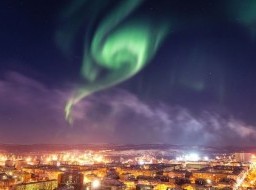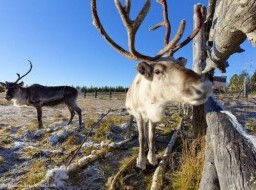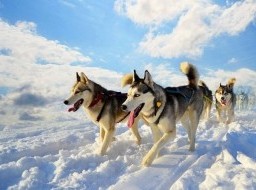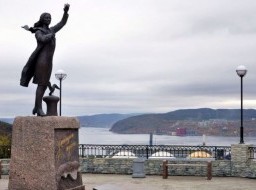Murmansk
Midway between Moscow and the North Pole, Murmansk is the largest city north of the Arctic Circle. It's also the most easily-visited northerly city in Russia, perfect for experiencing the midnight sun and polar night. Tourists are attracted by such phenomena as the unforgettable northern lights, traditional festivals, interesting sightseeing. Founded in 1916, Murmansk was officially the last city created under the Russian empire. Murmansk is the capital of the Murmansk region and a unique town. Its native people are proud of their beautiful, hospitable town. Murmansk known as Romanov-on-Murman at the date of its foundation October 4, 1916 is the center of Murmansk region and the largest Russian seaport on the Arctic Ocean. The city was named after the Russian Royal Dinasty Romanovs Romanov-on-Murman. The name Murmansk the city got after the Revolution in 1917. Some consider that the word Murman is descended from "Nurman" (Normann). Peoples of Scandinavia Russians called as "Murmans". Murmansk's development started at the beginning of the 20th century. Before that, the Kola Peninsula was inhabited only by the Skolt Lapps and a few Russian settlers. Murmansk is above the polar circle, so endures weeks of total darkness in the winter and enjoys weeks of 24 hour sunshine in the summer. It is above the tree line; the trees peter out a couple of hundred miles to the south. It is above the 10 degree isotherm; that is a line drawn around the arctic where the average June temperature is 10 degrees Celsius or less. And last but not least, despite cold winters, the sea doesn't freeze. The climate of Kola bay area and Murmansk coast is formed under the influence of the Gulf Stream. Thanks to its kind warmth winters here are comparably soft, and summer doesn’t shock the inhabitants with extreme heat. Peculiar for this place is high humidity, frequent mists and constantly windy weather. Go in winter, and you can have air temperatures of -16 degrees Celsius, with great clouds of steam coming off the water and hanging over the port area as fog. Even if it is summer make sure to have warm cloths and a hat with you. All seasons add to Murmansk specific colors. Summer is usually blossomed with lilacs and ashes, winter is colored with Polar lights, autumn overblows its inhabitants with gold, spring cheers up by melting snow and longer day time. Every season is nice for walks along the city. This is a great sight to see largely because of the unique Arctic nature. The peninsula is covered by thousands of lakes and dense forests.
Murmansk – a city beyond the Polar Circle has an entire package of phenomena: Polar night, Polar Day, Polar lights. During 41 days in winter sun doesn’t rise from behind the horizon, but as a kind of compensation it pleases the eyes with its shine in summer when it is Polar Day. Murmansk is a very young and dynamic city. It may safely be said that the city has a typically Soviet Russian face but with European features. Absence of fixed traditions affected the main atmosphere of the city. Murmansk population was never stable and mainly consisted of seamen who spent most part of their lives at seas. Close to the border zone Murmansk easily gets inspired by fresh molds of its foreign closest neighbors – Norway and Finland. The foundation of the town is connected with World War 1. Russia was isolated from allies in this war; therefore it was decided to build a sea port on the shore of never freezing Kola Inlet and to connect this port with Petrograd by railway. Murmansk is famous for its two ports – the Fishing port and the Merchant port. The life of Murmansk is closely connected with the sea and the ocean. Many seamen and fishermen live here. They have their own Culture Centers. In July there is a special festival which is called Fishermen’s Day. In the square in front of the Regional Scientific Library, which was built in 1970, there is a monument to the Fathers of the Slavic alphabet, Cyril and Mephody. This monument is the second and last copy of the world’s famed monument by Vladimir Grinevski. The building occupied by the Art Museum is the first brick building in Murmansk. It was built in 1927 and used as a department store and a restaurant before. Nowadays the Art Museum houses a collection of applied arts, an exhibition of drawings, pictures of modern painters. Traditional Northern Festivals have been celebrated in Murmansk since 1934.Different kinds of winter sports are included in festival programs. Murmansk townspeople also celebrate the following festivals: New Year, Maslenitsa, Victory Day, Fishermen’s Day, the date of town foundation and religious holidays. |








